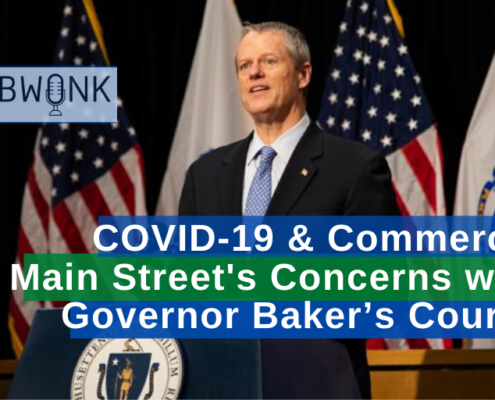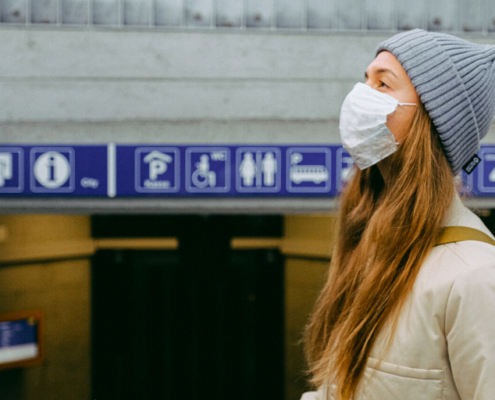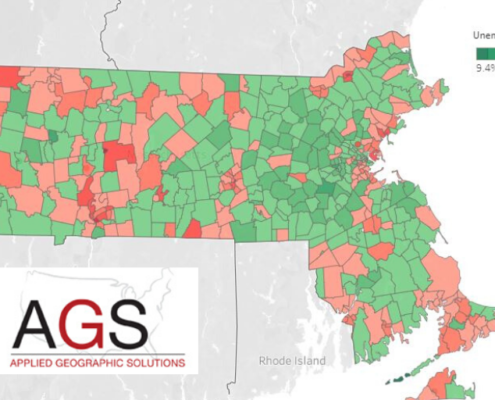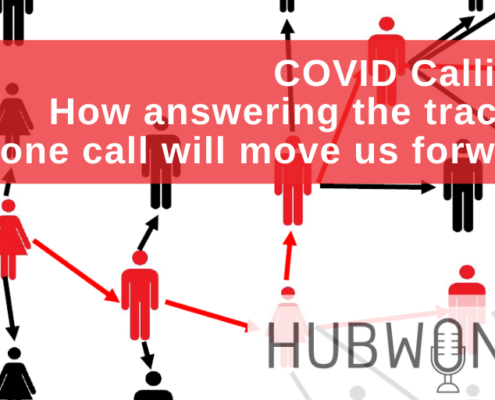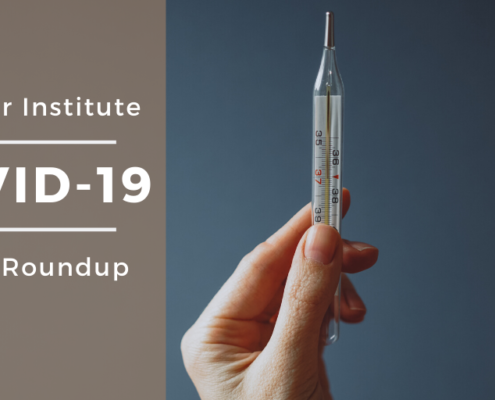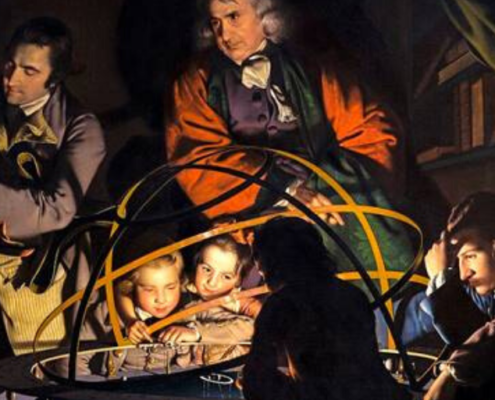New jobless claims data shows that Massachusetts unemployment has grown from 2.8% to at least 20.4% in five weeks
This morning, the United States Labor Department released its jobless claims report for the week ending April 18, 2020. It indicated that the Massachusetts received 80,345 new claims during the week ending April 18. This brings the total number of new claims filed in Massachusetts in the five weeks since March 14 to 653,680 (see Table A).
Based on today’s jobless claims report, Pioneer Institute projects that the current unemployment rate in Massachusetts is at least 20.4 percent, with a minimum of 762,299 currently unemployed individuals. The number of unemployed individuals is actually higher than that because not all unemployed individuals are eligible for unemployment insurance. A monthly survey of households conducted by the U.S. Census Bureau estimated that 108,619 individuals were unemployed in Massachusetts during the week ending March 14 and estimated that Massachusetts had a civilian labor force of 3,740,602 at that time.
Pioneer Institute previously projected that Massachusetts unemployment could reach 25.4 percent by the end of June. Today’s federal claims data provides further evidence that this may come to pass, given that many individuals who have become unemployed during the past five weeks have not yet been accounted for in federal weekly claims data.The $2.2 trillion Coronavirus Aid, Relief, and Economic Security Act (the “CARES Act”) broadened eligibility for unemployment insurance to include self-employed individuals, independent contractors, and some individuals with limited work history, among others. On Monday, April 20, Governor Baker directed the Massachusetts Department of Unemployment Assistance to begin accepting claims from this new category of eligible individuals. These newly eligible claims will be showing up in jobless claims data reported by the U.S. Labor Department in coming weeks.
Today’s jobless claims report means that the total number of unemployed individuals in Massachusetts has increased from 108,619 on March 14 to at least 762,299 on April 18, and that the unemployment rate has increased from 2.8 percent to at least 20.4 percent over this period.
The U.S. Census Bureau has just finished conducting a sample survey of State Employment and Unemployment during the week ending April 18 on behalf of the Bureau of Labor Statistics, but the results will not finalized and made public until May 22. Because of this built-in time delay, it is not possible to determine the real-time unemployment rate of the states. A proxy methodology is to add the most-recently reported number of unemployed individuals in each state, as reported by the Bureau of Labor Statistics, to weekly jobs claims. This methodology gives a conservative estimate of unemployment because it does not count individuals who have become unemployed but are not eligible for unemployment insurance.
Tradingeconomics.com projected last week that 4,545,000 seasonally adjusted initial jobless claims would be reported by the U.S. Labor Department nationally for the week ending April 18. Its forecast was just 2.5 percent more than the actual number of 4,427,000 reported today. It is currently forecasting that 3,680,000 claims will be filed in the week ending April 25.
If jobless claims continue to come in at that level, Massachusetts unemployment rate will likely reach at least 22 percent by the end of April, not counting unemployed individuals who have not filed unemployment claims.
The following Table A shows Pioneer Institute’s calculation of the unemployment rates of the 50 states and D.C. computed by adding total unemployment on March 14 to the subsequent five weeks of jobless claims. This is a conservative estimate because it does not account for additional individuals who have become unemployed during the past five weeks but were not eligible for unemployment benefits. The Cares Act has made many of these individuals eligible and those claims are expected to be reflected in upcoming jobless claims reports in the coming weeks.
TABLE A. Civilian Labor force, with unemployment claims since March 14, 2020, by state
| Civilian labor force 3/14 | Unem-ployment3/14 | Initial claims week ending 3/21 | Initial claims week ending 3/28 | Initial claims week ending 4/4 | Initial claims week ending 4/11 | Initial claims week ending 4/18 | 5-weeks of new claims since 3/14 | Unem-ployment on 3/14 + 5 weeks of new claims | Current minimum unem-ployment rate | |
| Alabama | 2,216,529 | 77,988 | 10,892 | 80,984 | 106,739 | 77,515 | 65,431 | 341,561 | 419,549 | 18.9% |
| Alaska | 345,010 | 19,426 | 7,847 | 13,774 | 14,590 | 12,007 | 13,027 | 61,245 | 80,671 | 23.4% |
| Arizona | 3,582,503 | 196,793 | 29,348 | 88,940 | 132,428 | 98,531 | 71,843 | 421,090 | 617,883 | 17.2% |
| Arkansas | 1,386,748 | 66,328 | 9,275 | 27,756 | 62,086 | 35,629 | 24,236 | 158,982 | 225,310 | 16.2% |
| California | 19,264,202 | 1,020,088 | 186,333 | 1,058,325 | 918,814 | 655,472 | 533,568 | 3,352,512 | 4,372,600 | 22.7% |
| Colorado | 3,140,721 | 142,578 | 19,774 | 61,838 | 46,326 | 104,572 | 68,667 | 301,177 | 443,755 | 14.1% |
| Connecticut | 1,928,880 | 72,183 | 25,100 | 33,227 | 33,464 | 34,050 | 102,757 | 228,598 | 300,781 | 15.6% |
| Delaware | 478,296 | 24,466 | 10,776 | 19,137 | 18,851 | 13,258 | 9,294 | 71,316 | 95,782 | 20.0% |
| District of Columbia | 419,333 | 25,253 | 14,462 | 15,869 | 15,329 | 9,974 | 8,591 | 64,225 | 89,478 | 21.3% |
| Florida | 10,335,416 | 443,651 | 74,313 | 228,484 | 169,885 | 180,419 | 505,137 | 1,158,238 | 1,601,889 | 15.5% |
| Georgia | 5,133,913 | 216,589 | 12,140 | 133,820 | 390,132 | 319,581 | 243,677 | 1,099,350 | 1,315,939 | 25.6% |
| Hawaii | 669,033 | 17,405 | 8,817 | 48,596 | 53,101 | 34,717 | 26,477 | 171,708 | 189,113 | 28.3% |
| Idaho | 893,211 | 22,947 | 13,586 | 32,941 | 30,904 | 18,531 | 12,456 | 108,418 | 131,365 | 14.7% |
| Illinois | 6,327,881 | 292,294 | 114,114 | 178,421 | 201,041 | 141,160 | 102,736 | 737,472 | 1,029,766 | 16.3% |
| Indiana | 3,277,168 | 104,801 | 59,755 | 139,174 | 127,010 | 113,755 | 75,483 | 515,177 | 619,978 | 18.9% |
| Iowa | 1,728,819 | 63,514 | 40,952 | 55,966 | 64,194 | 43,889 | 27,912 | 232,913 | 296,427 | 17.1% |
| Kansas | 1,498,403 | 46,516 | 23,563 | 54,330 | 49,306 | 29,873 | 31,920 | 188,992 | 235,508 | 15.7% |
| Kentucky | 2,051,009 | 117,936 | 49,023 | 113,149 | 117,575 | 116,277 | 103,548 | 499,572 | 617,508 | 30.1% |
| Louisiana | 2,152,388 | 149,441 | 72,438 | 97,400 | 100,621 | 79,653 | 92,039 | 442,151 | 591,592 | 27.5% |
| Maine | 695,200 | 22,191 | 21,459 | 23,770 | 30,910 | 13,488 | 11,446 | 101,073 | 123,264 | 17.7% |
| Maryland | 3,283,140 | 107,546 | 42,981 | 85,317 | 109,496 | 62,904 | 46,676 | 347,374 | 454,920 | 13.9% |
| Massachusetts | 3,740,602 | 108,619 | 148,452 | 181,423 | 139,647 | 103,813 | 80,345 | 653,680 | 762,299 | 20.4% |
| Michigan | 4,905,992 | 200,577 | 128,006 | 304,335 | 388,554 | 222,207 | 134,119 | 1,177,221 | 1,377,798 | 28.1% |
| Minnesota | 3,073,111 | 95,278 | 115,773 | 109,095 | 110,260 | 93,133 | 74,873 | 503,134 | 598,412 | 19.5% |
| Mississippi | 1,271,933 | 67,395 | 5,519 | 32,015 | 45,852 | 45,748 | 35,843 | 164,977 | 232,372 | 18.3% |
| Missouri | 3,137,363 | 139,709 | 42,246 | 104,291 | 91,458 | 102,126 | 52,678 | 392,799 | 532,508 | 17.0% |
| Montana | 538,014 | 18,685 | 15,349 | 20,763 | 21,244 | 14,275 | 10,509 | 82,140 | 100,825 | 18.7% |
| Nebraska | 1,058,573 | 44,081 | 15,700 | 24,725 | 27,054 | 16,279 | 12,340 | 96,098 | 140,179 | 13.2% |
| Nevada | 1,563,385 | 98,431 | 92,298 | 71,942 | 79,285 | 58,641 | 40,909 | 343,075 | 441,506 | 28.2% |
| New Hampshire | 768,594 | 19,620 | 29,379 | 31,378 | 39,202 | 25,273 | 19,110 | 144,342 | 163,962 | 21.3% |
| New Jersey | 4,573,551 | 174,263 | 115,815 | 206,253 | 214,836 | 141,420 | 139,277 | 817,601 | 991,864 | 21.7% |
| New Mexico | 973,175 | 57,713 | 18,105 | 27,849 | 26,132 | 19,043 | 13,338 | 104,467 | 162,180 | 16.7% |
| New York | 9,419,440 | 427,978 | 79,999 | 366,595 | 344,451 | 394,701 | 204,716 | 1,390,462 | 1,818,440 | 19.3% |
| North Carolina | 4,969,407 | 217,626 | 94,083 | 172,145 | 137,422 | 140,155 | 104,515 | 648,320 | 865,946 | 17.4% |
| North Dakota | 404,721 | 8,752 | 5,662 | 11,818 | 15,125 | 9,502 | 9,042 | 51,149 | 59,901 | 14.8% |
| Ohio | 5,732,212 | 313,818 | 196,309 | 274,288 | 226,191 | 159,317 | 108,801 | 964,906 | 1,278,724 | 22.3% |
| Oklahoma | 1,842,278 | 56,245 | 21,926 | 47,744 | 60,534 | 54,481 | 40,297 | 224,982 | 281,227 | 15.3% |
| Oregon | 2,107,777 | 69,389 | 30,054 | 47,498 | 62,788 | 54,581 | 35,101 | 230,022 | 299,411 | 14.2% |
| Pennsylvania | 6,539,194 | 394,247 | 377,451 | 404,677 | 277,640 | 234,868 | 198,081 | 1,492,717 | 1,886,964 | 28.9% |
| Rhode Island | 566,605 | 26,334 | 35,847 | 27,800 | 28,243 | 22,509 | 17,578 | 131,977 | 158,311 | 27.9% |
| South Carolina | 2,396,550 | 61,898 | 31,826 | 66,475 | 86,573 | 89,147 | 73,116 | 347,137 | 409,035 | 17.1% |
| South Dakota | 467,565 | 15,352 | 1,761 | 6,801 | 8,138 | 6,359 | 5,128 | 28,187 | 43,539 | 9.3% |
| Tennessee | 3,362,841 | 116,846 | 38,077 | 92,500 | 112,186 | 71,887 | 68,968 | 383,618 | 500,464 | 14.9% |
| Texas | 14,019,339 | 664,769 | 155,426 | 276,185 | 315,167 | 274,257 | 280,406 | 1,301,441 | 1,966,210 | 14.0% |
| Utah | 1,623,114 | 57,840 | 19,690 | 28,532 | 33,040 | 24,037 | 19,751 | 125,050 | 182,890 | 11.3% |
| Vermont | 342,381 | 11,024 | 3,784 | 14,633 | 16,474 | 9,662 | 6,434 | 50,987 | 62,011 | 18.1% |
| Virginia | 4,429,864 | 146,958 | 46,277 | 112,497 | 147,369 | 104,619 | 84,387 | 495,149 | 642,107 | 14.5% |
| Washington | 3,889,700 | 197,569 | 129,909 | 182,849 | 171,252 | 144,455 | 89,105 | 717,570 | 915,139 | 23.5% |
| West Virginia | 818,064 | 49,495 | 3,536 | 14,523 | 14,494 | 14,944 | 46,251 | 93,748 | 143,243 | 17.5% |
| Wisconsin | 3,104,804 | 105,705 | 51,031 | 110,934 | 104,823 | 70,000 | 55,886 | 392,674 | 498,379 | 16.1% |
| Wyoming | 294,911 | 11,049 | 3,653 | 6,396 | 6,543 | 5,794 | 3,321 | 25,707 | 36,756 | 12.5% |
Gregory W. Sullivan is the Research Director at the Pioneer Institute, overseeing the divisions PioneerPublic and PioneerOpportunity. He also previously served as Inspector General of the Commonwealth of Massachusetts for 10 years and in the Massachusetts House of Representatives for 17 years. Mr. Sullivan has a Master’s degree in public administration from the Kennedy School at Harvard University and a second Master’s degree concentrating in finance from the Sloan School at MIT.
Get Our COVID-19 News, Tips & Resources!
Related Posts


